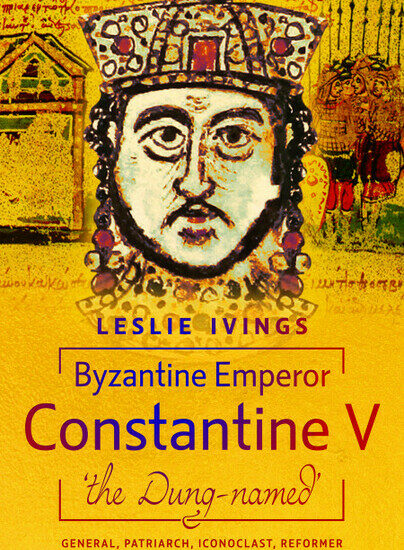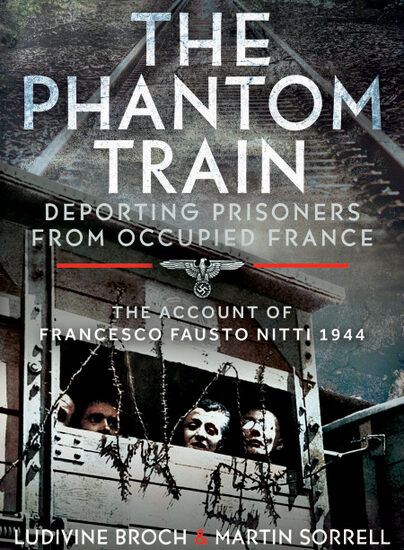Five Formidable Women of the Burgundian Empire and the Tudors of England
Author guest post from Susan Abernethy.
One – Anne de Beaujeu, Regent of France and Duchess of Bourbon
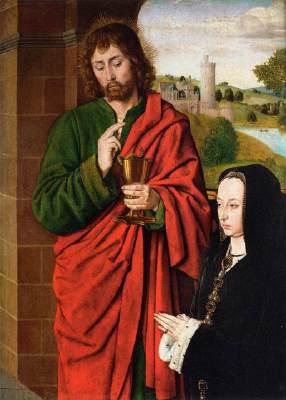
Her father, King Louis XI of France, described Anne de Beaujeu as the least foolish of her sex in the kingdom, which contained no wise ones. She inherited a great deal of intelligence from her father and had a ten-year apprenticeship under him, studying his political methods. Known as Madame la Grande, she married a younger son of the Duke of Bourbon, Pierre de Beaujeu. When King Louis died in 1483, leaving his minor son and heir Charles VIII to succeed him, he never named Anne as official regent, but the French court and foreign emissaries fully recognized her as the true ruler of France.
Henry Tudor could not have gained the throne of England by right of conquest without the help of this princess of France, and great-great-granddaughter of John, the Fearless, Duke of Burgundy. Richard III of England vigorously pursued the capture of Henry Tudor, making a deal with a minister to Francis II, Duke of Brittany who had sheltered Tudor and his followers at his court for many years. After a harrowing escape from Brittany, Henry threw himself on the mercy of the French court and convinced Anne he had a valid claim to the throne. She supplied him with troops, munitions and money which he used to defeat Richard III’s army at Bosworth in August 1485.
Two – Margaret of York, Duchess of Burgundy
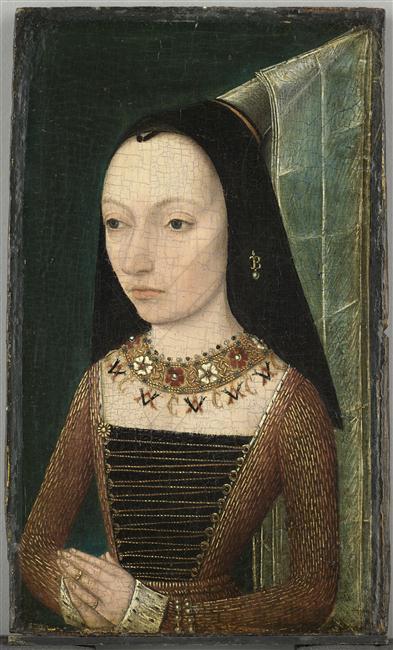
Margaret of York was the sister of Kings Edward IV and Richard III. Once Edward IV became king, there were years of negotiation for Margaret’s marriage. In 1468, Isabel of Portugal, parleyed a political and commercial treaty with England that included a spectacular match for Margaret to her son Charles the Bold, Duke of Burgundy. Charles ruled over an amalgamation of principalities in the Low Countries, northern France and parts of the Holy Roman Empire about the size of England and Wales combined.
When Henry Tudor came to the throne in 1485, he cut off some of Margaret’s income that had been granted to her by her brothers, which greatly displeased Margaret. She would do everything in her power to thwart King Henry VII’s status on the throne. Her nephews, Edward V and Richard of York had disappeared from the Tower of London in the summer of 1484 and there were several young men who professed to be one or the other of these lost princes, including one named Perkin Warbeck.
Margaret backed this young man and gave him coaching and aid, including soldiers and ships to invade England. Warbeck, in the end, was unsuccessful and captured by King Henry and imprisoned. By the fall of 1498, Margaret felt compelled to write a remarkable letter to King Henry VII, asking for his pardon and promising to recognize his right to rule England. In effect, she surrendered the pursuit of displacing the Tudor king from the throne.
Three – Jacquetta of Luxembourg, Duchess of Bedford and Countess Rivers
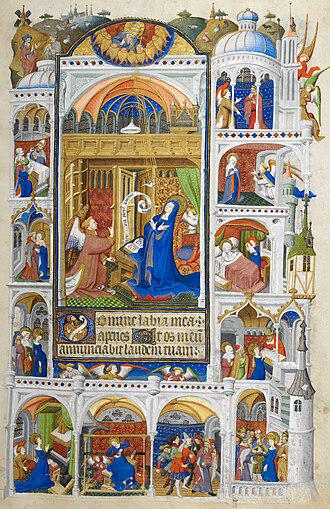
Jacquetta of Luxembourg married John, Duke of Bedford, the English regent of France in the spring of 1433. He ruled France for his nephew, Henry VI of England who inherited the French throne upon the death of his grandfather, Charles VI, according to the Treaty of Troyes in 1420. The purpose of this treaty was to end the conflict of the Hundred Years War. Jacquetta was seventeen, beautiful and lively. The couple got along well. Jacquetta complemented her husband and indulged her love of medieval illuminated manuscripts. When her husband died, Jacquetta did the unthinkable and married a mere English gentleman named Richard Woodville. She probably knew Woodville from his time working at the port of Calais in France. The couple moved to England where Jacquetta gave birth to over a dozen children, including her daughter Elizabeth.
King Edward IV of England, in a bold move, married Elizabeth Woodville in a secret ceremony in early 1464, much to the consternation of his council. Elizabeth was a young widow with two sons, but the marriage turned out to be a success with Elizabeth giving birth to her eldest daughter Elizabeth and two sons, Edward V and Richard of York, the two princes who mysteriously disappeared from the Tower of London. Elizabeth of York would eventually marry Henry Tudor following his victory at the Battle of Bosworth, becoming the first Tudor Queen Consort and the mother of King Henry VIII, making Jacquetta of Luxembourg the great-grandmother of Henry VIII. This union would effectively end the Wars of the Roses which had raged in England since 1455.
Four – Juana, Queen of Castile

Juana’s life as a Spanish princess took a dramatic turn when Spanish and Habsburg diplomats concluded a marriage treat on November 5, 1495, aligning Spain with the Habsburgs and the Tudor king of England to counterbalance French aggression. The Catholic Monarchs, Isabella of Castile and Ferdinand of Aragon would later arrange a marriage for their youngest daughter, Catherine, to Arthur Tudor, Prince of Wales. The November treaty called for Juana’s marriage to Philip of Habsburg, Archduke of Austria and titular Duke of Burgundy and a match with Philip’s sister, Archduchess Margaret of Austria to Juana’s brother Juan, Prince of Asturias.
By the time of the death of Queen Isabella in 1503, Juana was unexpectedly heir to the throne of Castile. Due to extenuating circumstances, Juana and her husband Philip did not depart for Spain until January 1506. During the journey, a fierce storm blew the fleet off course to Falmouth, England, where Philip were entertained by King Henry VII at Windsor Castle from January 30 to April 23.
Philip went to great lengths to keep Juana away from the English court, completely locking her out of the celebrations due to her as queen while carrying out discussions related to the fate of her own kingdom. Henry VII requested a meeting with Juana and voiced his regret at the brevity of the visit. All indications show King Henry had a very favourable impression of Queen Juana.
When writing to Gutierre Gómez de Fuensalida, ambassador to England of the Catholic Monarchs, in June 1508, referring to the February 1506 meeting, Henry wrote Juana ‘made a very good impression on me when I saw her. She struck me as having a fine bearing and manner and spoke with restraint and complete authority; and although her husband and those who came with him implied she was mad, she struck me, on the contrary, as sane’. In another twist of fate, when Henry VII considered marrying again, one of the candidates he considered was the widowed Queen Juana of Castile.
Five – Margaret, Archduchess of Austria, Duchess of Savoy and Regent of the Netherlands

Margaret was the daughter of Mary of Burgundy, the only child of Charles the Bold, the last Valois Duke of Burgundy. Her father was the Holy Roman Emperor Maximilian I. After the devastating loss of the Battle of Nancy and the death of Charles the Bold, Mary of Burgundy was forced to marry quickly to prevent her Burgundian Empire from being swallowed up by France and Germany. Her marriage to Maximilian produced two children, Philip of Habsburg and Margaret of Austria.
A peace treaty with France called for the marriage of Margaret to King Louis XI’s son, the future King Charles VIII of France and she departed the Low Countries to live her early years in the Chateau of Amboise. King Charles ended up marrying Anne, Duchess of Brittany in an effort to annex the duchy to the French kingdom. Margaret returned to the Low Countries, only to be married to Juan, Prince of Asturias in the spring of 1497. Juan died after a few months, and Margaret remained in Spain for two years.
Shortly before she departed again for the Low Countries, she witnessed the proxy marriage of her sister-in-law, Catherine of Aragon, to Arthur Tudor, Prince of Wales. Margaret’s father and brother brokered yet another marriage for her to Philibert II, Duke of Savoy in 1501. This union turned into a love match and Margaret mastered the art of governance as the ruler of Savoy until Philibert’s tragic death in September 1504.
Once again, Margaret returned to the Low Countries. Her father pressured her to make an alliance with England by marrying the widowed King Henry VII of England. This time, Margaret has the confidence to decline any more marriages. She would skillfully turn down the Tudor king while maintaining good relations with his government over the next few years.
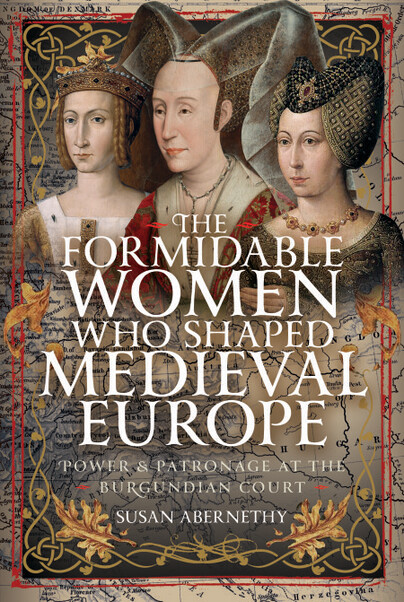
Order your copy here.
